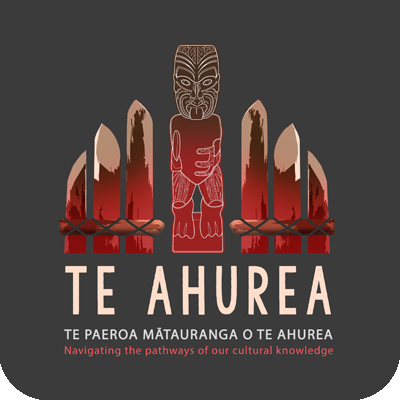THE WAR LORDS
REWA
Rewa was of the Ngāi Tawake hapū of Ngāpuhi, the son of the Rangatira Te Maoi and his wife, Te Auparo. His father and two of his brothers were killed in 1807 at the battle of Moremonui between Ngāpuhi (northern regional tribes) and Ngāti Whātua (Auckland regional tribes).
Not long after, Rewa’s mother and his sister, Te Karehu, were also killed, in a Ngare Raumati attack on Waimate. Rewa and his descendants later took the name of Te Patukeha (The Turnip Killing), to remember his mother’s death in her garden.
Rewa had two wives, Te Koki, a cousin of the chief Tītore, and a second wife, brought back from battle, who committed suicide in 1823 after giving birth to a son.
Rewa’s rank as a major chief became evident in his early association with Hongi Hika, who by 1815 was the undisputed senior leader of the Ngāpuhi hapū Ngāi Tawake and Ngāti Tautahi.
Rewa took part in the Ngāpuhi attacks on tribes to the south over a period of 10 years, from around 1818. Kororipo Pā was the major gathering place for the departure of hundreds of warriors and laden canoes. The spiral of war, trade and more war reached a peak in the mid-1820’s, as tribes to the south engaged in efforts to equip themselves with the new weaponry.
In 1823-1824, Hongi’s blind wife, Turikātuku, escorted Mātire Toha, Rewa’s daughter, to Manukau harbour to be espoused to Kati Takiwaru, younger brother to the Māori King, Te Pōtatau. The marriage was part of Ngāpuhi’s peace making alliance with Waikato after that tribes defeat in the battle of Mātakitaki in May 1822.
Both Mātire Toha and Kati had been mission students at Kerikeri. When Hongi shifted to Whangaroa in 1826, Rewa was recognized as one of the most powerful chiefs of the Northern Alliance of Ngāpuhi and the Bay of Islands.
Rewa died on 1st September 1862, and is buried at Paripai urupā (cemetery) at Matarāua.
HONGI HIKA
Hongi Hika was born in 1772, about the time of the Waimate and Kerikeri conquests, and he spent his early years learning the arts of War and agriculture from his parents people at Waimate and Kerikeri. His mother Tuhikura belonged to Ngāti Rēhia, the hapū who cultivated land at Kerikeri and who were strong allies of Hongi’s father’s hapū, Ngāti Tautahi.
Hongi had inherited Mana (authority) over this land from his father and grandfather, who had led successful military campaigns against former occupants, Ngāti Miru and Te Wahineiti, between 1770 and 1800. Hongi Hika was a member of an elite family with proud military heritage.
Hongi grew up with two older brothers and only assumed the mantle of military leadership sometime after the age of 35 years old. Between the ages of 36 years and 43 years of age, Hongi established himself as the paramount military leader of Ngāpuhi in campaigns against the Northern Tribes. Until 1815 he shared the leadership of Ngāpuhi with his older brother, Āriki (paramount chief), Kaingaroa.
In 1820 Hongi travelled to London and was presented to King George IV. In England, Hongi was presented with a chain-mail coat, which he would later wear in battle, along with other valuable presents that he traded for muskets in Sydney on his way back to Waimate.
During the years 1821 to 1823 Hongi was away from the Bay of Islands for much of the time on military campaigns to the south. These expeditions departed from Kororipo Pā. Hongi died in 1828 at Pūpuke, Whangaroa, aged about 55 years.
Ngāpuhi traditions state that Hongi’s body was concealed in a cave at Matauri. After his hahunga (cleansing of his bones) in April 1829 at Kaeo, his remains were subsequently returned to his former seats of power – successively at places near Te Ngaire, Matauri Bay, Waimate and Pākinga (Kaikohe), before finally deposited at Wharepaepae, a traditional Ngāpuhi burial site.
TĀREHA
Early reports of Tāreha suggest that Europeans quickly recognized Tāreha’s position as a powerful Ngāti Rēhia leader. This view was endorsed by visual impressions of Tāreha.
Tāreha was described as a man of extraordinary size and strength and seemed to surpass all his countrymen. He was much looked up to for his bravery and skill in leading warriors to battle. Richard Taylor, who met Tāreha in the late 1830’s recorded that he was one of the largest men the missionary had ever seen. Said to be over 7ft tall and eventually came to weigh more than 600lbs.
Tāreha was unquestionably an influential and strong leader who directed and protected his own people. The significance of Tāreha’s position is further reflected in the high degree of tapu (sacred, forbidden, taboo) associated with him, his family and belongings.
Tāreha accompanied Hongi Hika and Rewa on many of the southern war campaigns of which his mere presence was enough to instil confidence of victory.
Tāreha, the Ngāti Rēhia chief remained in Kerikeri, moving regularly between the Kerikeri basin and Te Tii. When he died in August 1848, the old chief was at first buried in the chiefly wahi tapu (sacred site) at the basin.
On the 9th of April 1849, Hone Heke and a large contingent of Māori stopped at Kerikeri Mission on their way to Te Tii to remove Tāreha’s bones. Heke said that “Tāreha was a great chief, and therefore his bones should be removed to the place where his tūpuna (ancestors) bones were laid”.
One week later, Heke and his party passed through Kerikeri with Tāreha’s bones where they were taken for display and reburial at Waimate

